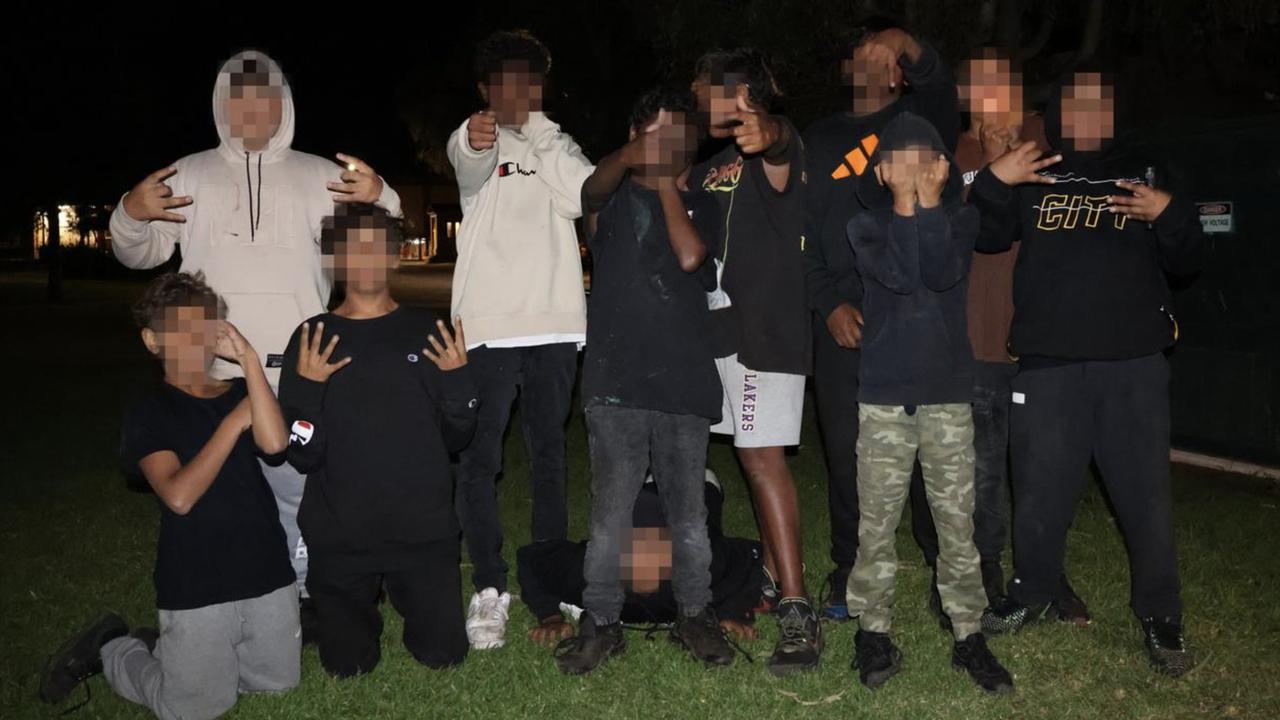‘Eyeballs burning’: Mum’s nightmare after popular cosmetic treatment
Melbourne mum Sarah was excited to spend $160 on a treatment she’d had before – nothing could have prepared her for the nightmare that followed.

A popular cosmetic treatment has left one Aussie mum “traumatised” after it caused extreme pain in her face and eyes and burning skin, resulting in multiple trips to emergency and a serious infection.
Last year, Sarah, who did not want her surname revealed, paid around $160 for a skin needling session at a national provider with clinics around Australia.
But she ended up in agony and with ongoing issues with her skin. She is now questioning the lack of consumer protection for these types of cosmetic treatments, describing it as an industry with “ruthless cowboys” who don’t care about their patients.
It comes as experts are warning there is no national regulation for the use of cosmetic devices to perform popular treatments, such as laser, skin needling, hair and tattoo removal, and body contouring.
Meanwhile, the industry has exploded, with Australians now spending over $1 billion annually and treatment providers cropping up at major shopping centres across the country.
For Sarah, it has made her look at the popular therapy differently.
“Having something wrong with my face that I’ve never experienced in my life and sitting in emergency having my face like I’ve just got sunburnt out in 50 degrees and my eyeballs were burning – the whole thing, it was a mess,” she told news.com.au.
The Melbourne woman said she was panicked sitting in emergency with her face on fire – begging to be seen – after very little after-care from the clinic where she had skin needling.
“I said to the lady, how much longer do I need to wait? It’s been hours and she does that thing on my face with a gadget that takes your temperature. So she reaches over anyway, and my face was 42 degrees,” she revealed
“I have never seen my skin look so bad. What I thought was going to be a positive experience was the most miserable thing to happen.”
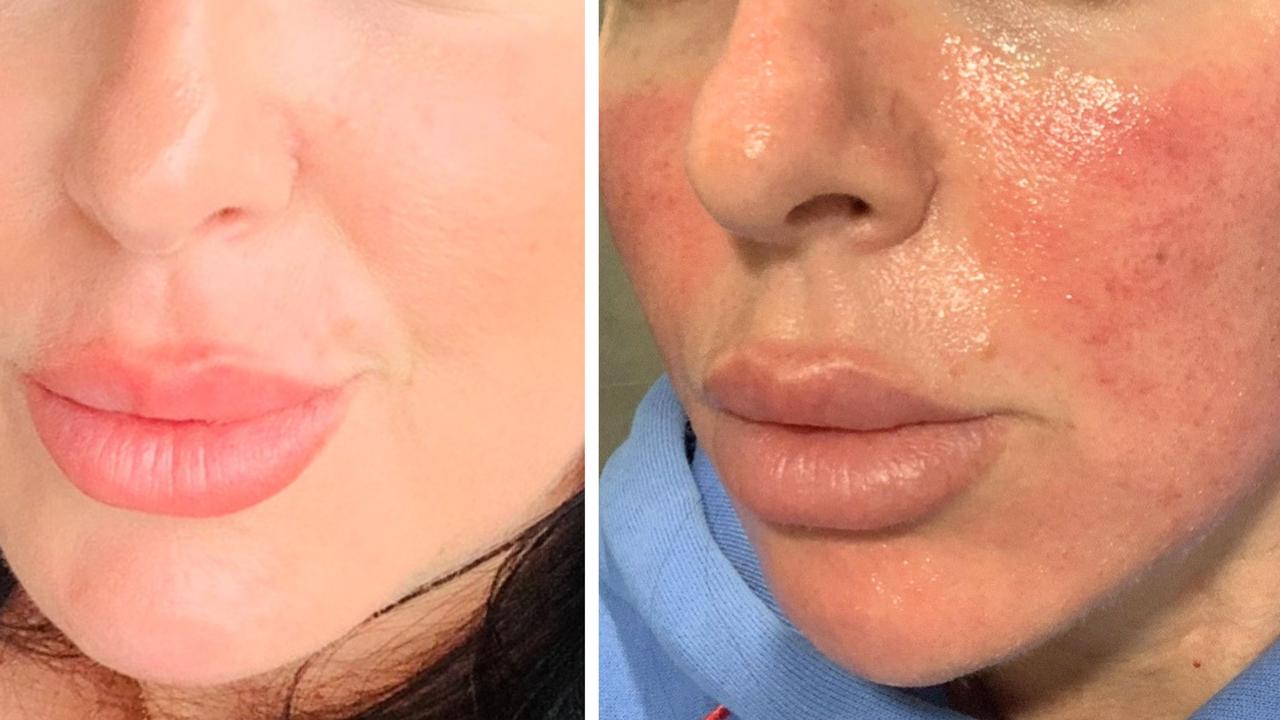
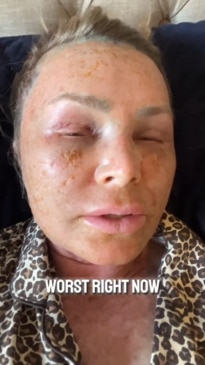
‘Permanent scarring or skin damage’
A groundbreaking new study is investigating adverse effects of common cosmetic treatments such as laser and body sculpting in Australia and is being conducted by Monash University and the Australian Radiation Protection and Nuclear Safety Agency (ARPANSA).
Monash University Accident Research Centre and lead researcher Zoe Thomas said despite the growing popularity of the treatments, there is limited research on the risks and adverse effects associated with these procedures.
“These treatments can result in serious injuries – including burns and infection – and may cause permanent scarring or skin damage,” she said.
‘Pain through my eyeballs’
It all began for Sarah with an initial consult for skin needling where she had been sold a cream to use prior to the treatment, which caused skin irritation.
Skin needling is a cosmetic procedure that uses tiny needles to create micro-injuries in the skin, stimulating collagen and elastin production, and is advertised help to improve skin texture, and reduce wrinkles, scars, and pigmentation.
Yet, the Melbourne mum said her concerns about the cream were dismissed by the clinic and she was told the treatment was “known to have a burning feeling” right after it was applied.
The cream that had caused irritation had also been slathered all over her face “so the skin needling treatment has a lubricant,” she was told at the time.
The 47-year-old trusted the clinic, believing she was dealing with professionals. But she’s been left distressed by the lack of after-care or concern for the extreme pain and serious medical issues she later experienced.
Three days after the skin needling, she was experiencing burning, redness on her face and the pain was worse than the day of the treatment.
Do you have a story? contact sarah.sharples@news.com.au


She contacted the clinic, which facilitated a Skype session with a doctor, where she was told to see her GP if things did not improve.
Steroid cream was prescribed by her GP but Sarah was still in pain. Twice she ended up hospital emergency departments for hours.
“I had pain through my eyeballs. My face was on fire and it didn’t go away,” she said.
She was prescribed a strong course of steroid tablets and doctors told her the skin infection could have been caused by two things.
“They said it could have been one of many of those ingredients that were in that cream as there were so many active ingredients and only one of them needs to trigger some type of response in my skin. And the other part was it could have been like an infection from the skin needling equipment,” she said.
“Also, at the same time I was going back to my doctor every day for five days getting an injection in my bum to treat the infection.”
Sarah was diagnosed with cellulitis, a serious bacterial skin infection, commonly caused by Staphylococcus or Streptococcus bacteria.
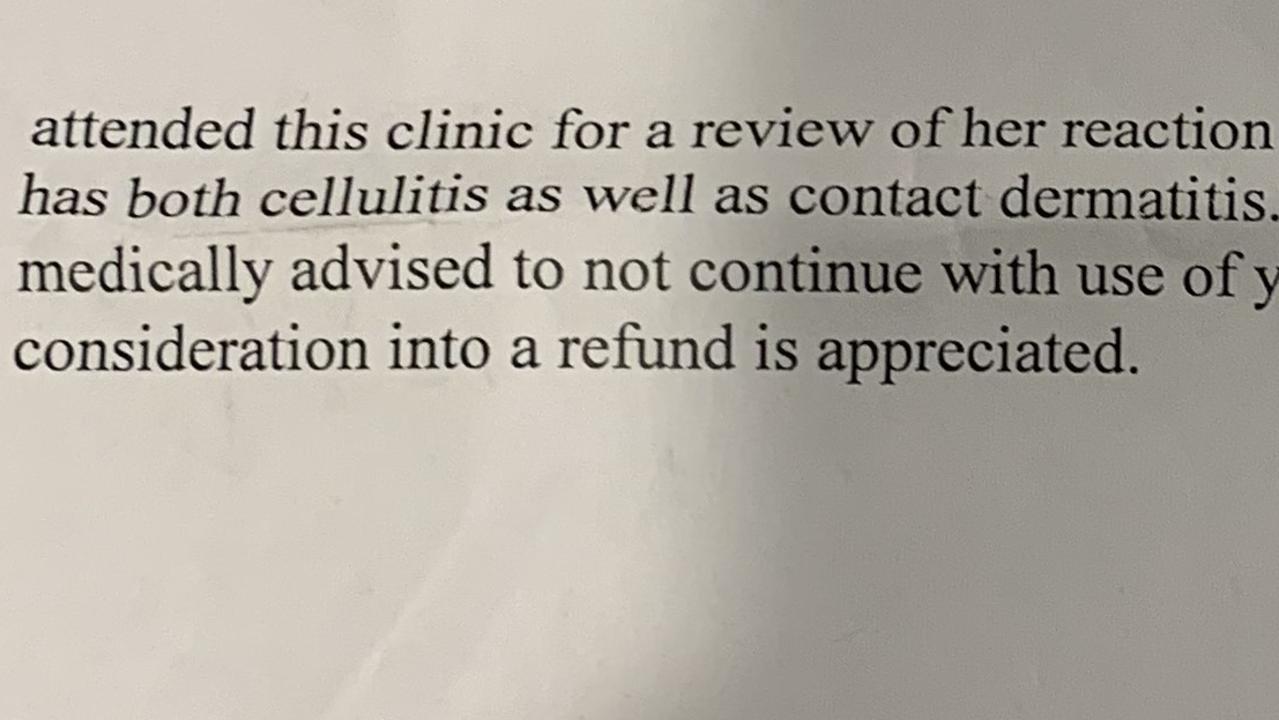
The mum said even now, a year later, her skin is sensitive. Her cheeks will often look red and can be warm to touch, and she has to be careful in terms of the creams she uses.
As a result, she will never get skin needling done again and has been left feeling “angry”.
“I wouldn’t risk it ever again,” she said.
“No one took accountability, no one took any responsibility for it. And I don’t think anyone cared to know how I turned out.
“No one rang to check on me and at least even just apologise … which is ludicrous. What bothers me too is just there was no common sense or a bit of empathy … They don’t care what happens to people like me. It’s beyond me that they still can even run and be open.”
She said she contacted consumer affairs in her state and even lawyers to try and stop the clinic from operating but was basically told the businesses terms and conditions would cover them and she had “no leg to stand on”.
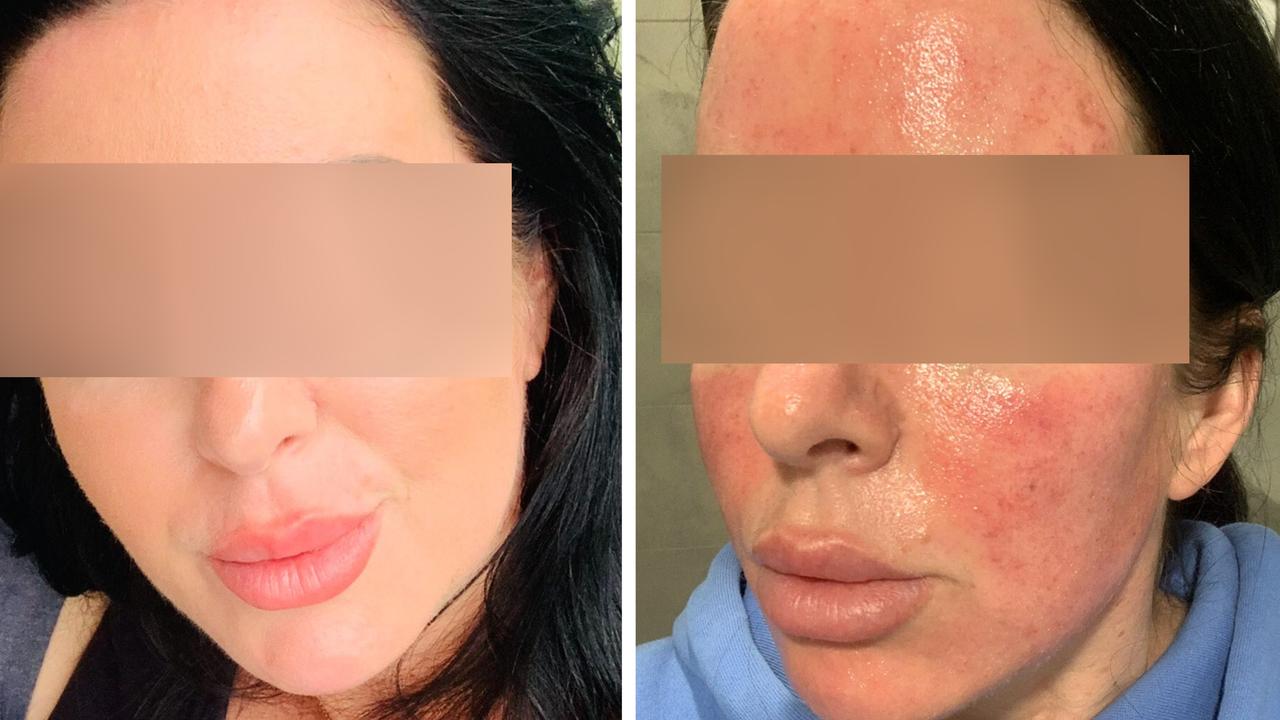
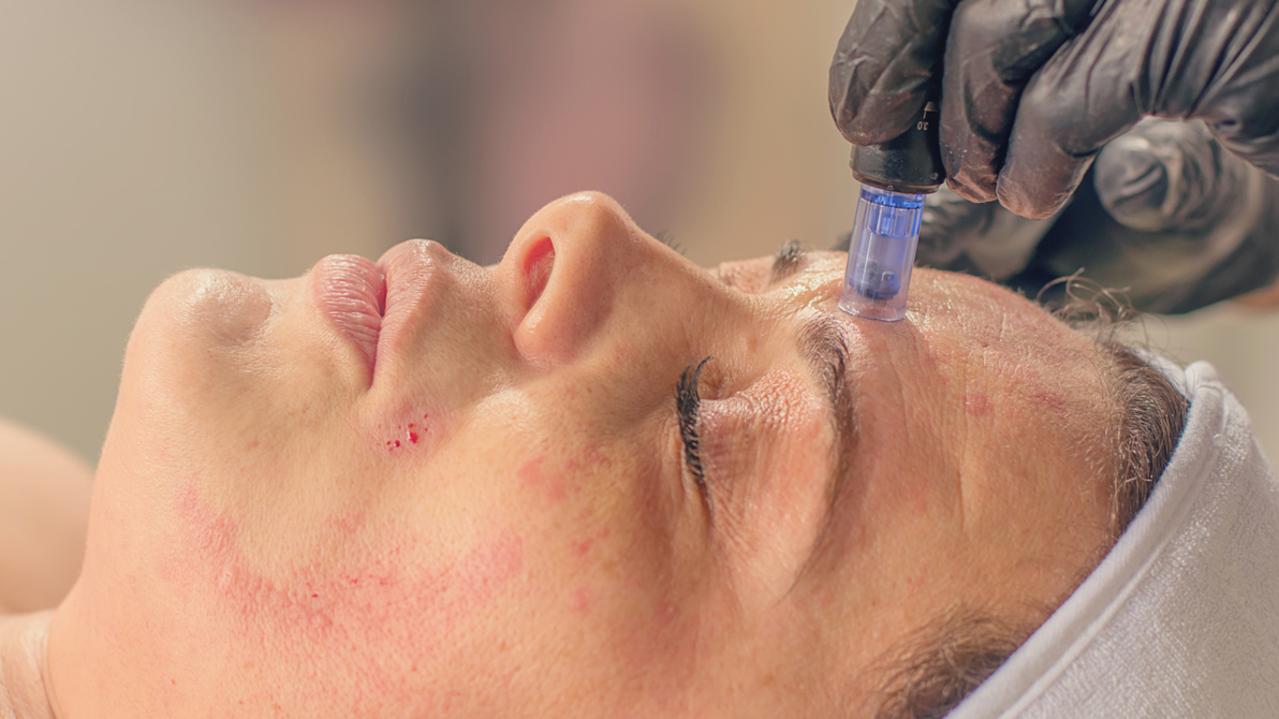
Meanwhile, Ms Thomas said her team are surveying users of these products and procedures to better understand the safety of energy-based cosmetic treatments in Australia. “This PhD research will be used to identify whether further consumer protections are needed,” she said.
Researchers are seeking individuals aged 18 years and above who have experienced an adverse effect following an energy-based cosmetic treatment in Australia since 1 January 2016 to fill out a survey.
‘The worst experience”
Sarah simply wants to see changes as she feels currently consumers have nowhere to turn when something goes wrong.
She had previously had skin needling done with another provider with great results – and knew it would cause soreness – but was shocked by the burning feeling after the treatment.
“Going into emergency all the time with my son and sitting there for six hours was the worst experience,” she added.
“In the end, all (the clinic) did was refund me for the future purchases that I had booked and they never refunded me the $160 for the treatment.”
She estimates she spent between $500 and $1000 on creams and medications for her damaged skin.

Heartbreaking impact on injured woman
Tina Viney is the CEO of the Aesthetics Practitioners Advisory Network (APAN) – a national standards body and association for skin and laser therapists and cosmetic medicine.
She said the majority of devices used for treatments, such as lasers and skin needling, are heat-based devices and can cause three injuries.
“You might have a light burn, you might have blistering, or you may have a severe burn and you can have up to second degree or even third degree burns – that is one of the risks,” she told news.com.au.
“The other thing is it can change the pigmentation so you can create blotchy glossiness in the colour component of the skin, so you can have brown patches or white patches happening on the skin. The third one, obviously this injury is quite severe, it can result in permanent scarring.”

Injuries can cause psychological and emotional trauma, embarrassment and pain, as well as court cases launched by victims where Ms Viney often acts as an expert.
In one case, a woman was so upset by the burns she had received from a cosmetic treatment, she couldn’t face cooking due to the heat for six months – forcing her husband to get takeaway for the family, she revealed. She said it was difficult to know the scale of the problem currently, particularly as providers did not want to admit to having caused patient’s injuries, adding many therapists also felt traumatised at causing patient’s harm.
But she said insurance companies delivered some insights, with Ms Viney being told that four years ago there were one to two cases of injuries a week and this has now skyrocketed to five a day.
Yet, the increase may not be an indication of clinics doing the wrong but the growth in the industry, with “these machines sold all the time”, she added.
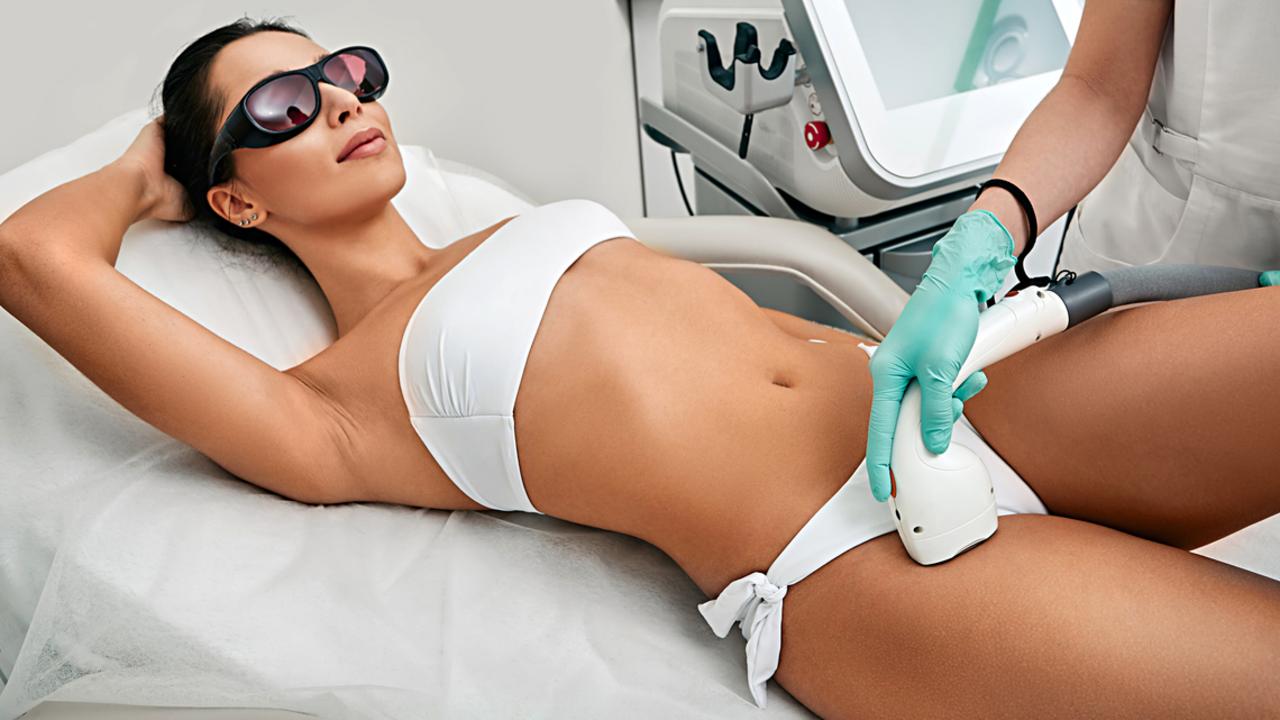
Ms Viney said part of the problem is injuries can occur when the main practitioner is fully trained, but another therapist steps in during busy periods who hasn’t got the qualifications.
“Now that’s dangerous because no one really knows how the body’s going to react until they do react,” she said. If a patient complained of burning, a therapist should stop treatment to immediately cool down the body, provide an anti-inflammatory cream or use LED light to calm down the area, she added.
But she said consumers also have a duty to follow after-care instructions for treatments, such as not scratching the treated area or taking hot showers.
She recommends consumers ask providers key questions such as what training has been done, has a laser safety course been completed, is the practitioner qualified and not just the owner, as well as their risk management protocols, including how they manage adverse impacts.
“If you are feeling pain and discomfort, don’t allow the practitioner to keep going,” she added.
APAN is currently liaising and participating in regulatory initiatives with both state and federal governments, she said.

‘Botched or risky treatments’
Since the 2019-2020 financial year, the NSW Health Care Complaints Commission (HCCC) has received 58 complaints about cosmetic therapists, 263 about medical practitioners operating in cosmetic services and 174 about cosmetic health services.
Overall, the HCCC Commission received a total of 9460 complaints in 2023-24, of which 111 complaints involved a cosmetic treatment.
“This is a relatively small number, however, we believe this does not reflect the full extent of unsafe practices, as some consumers may not report botched or risky treatments,” a spokesperson added.
While the allegations often related to non-registered and unqualified individuals performing cosmetic procedures, HCCC are also seeing an increase in complaints involving adverse outcomes.
These include alleged contraction of botulism, multiple instances of haematomas and swelling, allergic reactions, and permanent disfigurement caused by fibrosis, often requiring further medical intervention to correct complications, the spokesperson added.

A lack of regulation
Regulations only apply to laser in Tasmania, Queensland and Western Australia or IPL in Tasmania. For the remainder of states and territories – or for other treatments – there are no specific regulations.
ARPANSA’s Health Impact Assessment assistant director and associate professor Ken Karipidis said while some Australian states regulate select cosmetic treatments, these regulations are limited and inconsistent across jurisdictions.
“As the Australian government’s primary authority on radiation protection, we want to ensure that appropriate measures are in place to keep people safe when undergoing cosmetic procedures that involve the use of non-ionising radiation,” he said.
“This PhD will inform us if greater regulation is required for consumer protection given the increasing and widespread use of these products and services.”
The national law does not restrict the practice of laser treatments or other energy-based cosmetic treatments, meaning that both regulated and unregulated practitioners can use these devices, added a spokesperson for the Australian Health Practitioner Regulation Agency.
“We have received notifications regarding registered health practitioners and the use of these treatments,” she said.
“When their practice is considered below the expected standards of their profession, National Boards can take regulatory action, for example impose restrictions or accept an undertaking from the practitioner to complete more training.”
sarah.sharples@news.com.au
Read related topics:Melbourne




